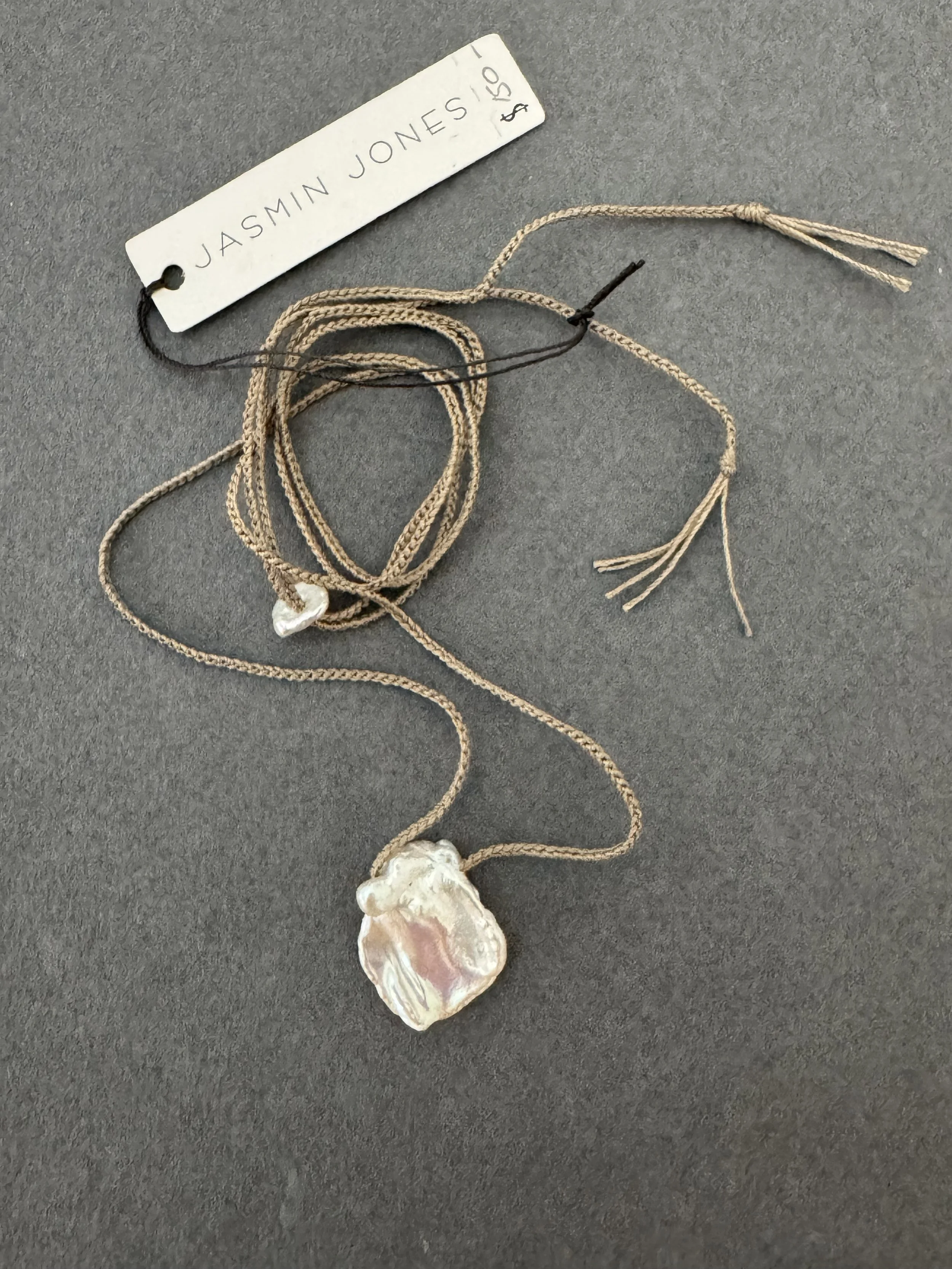Keshi Pearl & Crochet Necklace
Keshi Pearl & Crochet Necklace
I personally handcraft these Keshi pearl and crochet cord necklaces by blending my longtime love of micro crochet with my fine jewellery practice.
Keshi pearls are a favourite of mine and are known for their irregular shapes and incredible lustrous surfaces, each pearl is one-of-a-kind (see below for an explanation of Keshi pearls).
Creating these necklaces requires me selecting quality Keshi pearls for drilling before sitting down to hand crochet each delicate cord.
Every necklace has a small Keshi pearl as a slide closure enabling you to select your desired length.
Style these casual by day or fab night out. Perfect for layering with your other jewels or wearing solo. A great gift for lovers of artisanal pieces.
CARE: To ensure longevity of your item we suggest you do not wear in water and remove before
sleeping.
WHAT ARE KESHI PEARLS?
Keshi Pearls are known for their unique shapes and incredible lustre, each one is a unique
individual pearl, no two are the same, and are the closest thing to a “natural” pearl.
Keshi pearls are a type of non-nucleated pearl formed in both saltwater and freshwater oysters.
Unlike traditional pearls, which develop around an implanted nucleus (often a piece of shell or
another foreign substance), Keshi pearls are formed when an irritation naturally occurs in the
oyster. This can happen during the pearl cultivation process. Keshi pearls are by-products or an
accident of the culturing process and are not created on purpose, technically they are not
cultured pearls and consist of pure solid nacre, because they are without any nucleus made of
foreign matter the interplay of light as it penetrates through the nacre and refracts gives the
highly sought-after iridescent lustre.
Keshi pearls can form in diverse ways when an irritation naturally occurs in the oyster, for
example.
- after the oyster has been nucleated, a piece of the already forming pearl chips or fractures
inside the mollusc. As the piece irritates the mollusc it begins to secrete nacre over it, creating
a second, unique pearl.
- the mollusc rejects the implanted nucleus before the pearl has begun to form properly and
continues to secrete nacre over the formed pearl sac.

